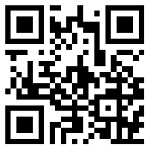提醒:点这里加小编微信(领取免费资料、获取最新资讯、解决考教师一切疑问!)
(5) 动词后面跟双宾语时可以采用两种结构:
①动词+间接宾语(人)+直接宾语(物)。如:He often gives me some help. (他常常帮我。)
②动词+直接宾语+介词+间接宾语。注意,一般情况介词用to,但动词是make, buy, borrow时,介词用for.如: Please make me a kite. (请给我做个风筝。)或Please make a kite for me.
(6) 在“动词+宾语+宾补”结构中,如果宾语是不定式、动名词、宾语从句,则常用it做形式宾语,而将实际的宾语移到补语后面去。如:I found the job rather difficult. (我发觉这个工作相当难做。) / I found it rather difficult to do the job.
(7) 宾语可以由从句充当,详见“宾语从句”。
4、表语:
(1) 说明主语的身份、性质、状况等含义的成分,通常由形容词、副词、介词短语、名词、代词等充当。如:He became a doctor after he left high school.(高中毕业他当上了医生。) / The rubber wheels are over there.(橡胶轮子在那边。) / He does not feel like eating anything today because he has caught a bad cold.(他今天不想吃任何东西因为他得了重感冒。) / Who is it?(谁呀?)
(2) 表语只能放在连系动词(如:be,look,become,turn get,grow,feel,seem) 之后,对表语进行提问的句子除外。
(3) 代词做表语一般用主格,口语中常用宾。如:It’s I. (It’s me.)是我。
(4) 只能作表语的形容词有:sorry,afraid,alone,asleep,awake,ill,well,sure,interested等等。He was terribly sorry for his carelessness.(他很为他的粗心而歉疚。) / Please make no noise here; the baby is asleep.(请不要发出响动,婴儿正熟睡呢。) / I am only interested in sitting in a boat and doing nothing at all!(我只是对独坐孤舟无所事事感兴趣。) / I am not alone in thinking so.(并非只有我才这样想的。)
(5) 表语也可以由从句充当,详见“表语从句”。
5、定语:
(1) 修饰名词或代词的成分,常由形容词、名词(含所有格)、代词(物主、指示、疑问、不定)、介词短语、不定式(短语)充当,在初三阶段还学习了定语从句做定 语的知识。如:Put it in the top drawer.(把它放在最上层的抽屉里。) / France and Switzerland are European countries. (法国和瑞士是欧洲国家。) / His mother and father are both college teachers.(他的父母都是大学教师。) / This is the day that I can never forget in my life.(这是我一辈子难忘的日子。)
(2) 单词做定语时一般放在被修饰的名词前面,而且有一定的次序:
(3) 时间副词(now,then,today,yesterday,...)、地点副词(here,there,back,in,out,home,...作 定语时放在被修饰的名词后面。如:I could not find my way out, so I stayed there all along. (我找不到出去的路,所以就一直呆在那儿。)
(4) 介词短语修饰名词时只能放在名词的后面:The monkey in the cage was caught yesterday. (笼子里的猴子是昨天逮着的。)
(5) 形容词修饰复合不定代词时,往往后置。如:He remembered everything unusual. (他记得所有不寻常的事情。)
(6) 定语还可以用从句充当,详见 定语从句。
(7) 注意:由于定语属于修饰性的成分,因此它常归入主语、宾语、表语之中,不作为句子的主要成分。
6、状语:
(1) 说明动作“何时”、“何地”、“如何”发生,或者说明形容词或副词的程度,一般由副词、介词短语、不定式、状语从句等充当。如:I was not born yesterday.(我又不是昨天才出世的娃娃。)/ For many of these families a college education was something new.(对其中的许多家庭来说,大学教育是件新事物。)/ He woke up to find his house on fire.(他醒来发现房子着火了。) / You cannot leave until your work is finished.(在你的工作被完成以前你不能离开)
(2) 副词作状语位置较为灵活。
(3) 多个状语相连时,一般先单词、后短语,先地点、后时间,先小概念、后大概念。如:He went ouf of the room at a quarter to 23:00 last night and then disappeared into the dark.(他昨夜22点3刻从房间里出来,然后消失在黑暗之中。)
(4) 状语还可以用从句来充当,有时间状语从句、地点状语从句、原因状语从句、目的状语从句、结果状语从句、比较状语从句、让步状语从句、条件状语从句等。
(5) 注意:由于状语属于修饰性的成分,常归入谓语,因此不作为句子的主要成分。
7、宾语补足语:
(1) 补充说明宾语的动作、状态的成分为宾语补足语,常由名词、形容词、动词非谓语形式(不定式、现在分词、过去分词等)、介词短语等充当。如:Call him Jim, please. (请叫他Jim。) / I tried my best to make him happy. (我竭尽所能让他开心。) / Ask her to come to dinner tomorrow. (请他明天来。) / He let the smaller animals bring food to him. (他让小动物们给他带食物来。)
(2) 部分表示位置、方向的副词也可以作宾语补足语。如:Let him in, I tell you! (我跟你说,让他进来!)/ Please put it away. (请把它收起来。)
提醒:点这里加小编微信(领取免费资料、获取最新资讯、解决考教师一切疑问!)









